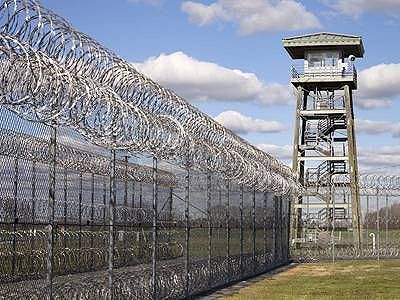Do I Need Planning Permission for Electric Gates in West Yorkshire?

If you’re considering installing a new electric gate on your property, you may be wondering about the legal side of things – specifically, planning permission. In the UK, certain fences, walls, and gates do require planning permission depending on their height and location. Nobody wants to run afoul of local planning rules or be asked to take down a lovely new gate because proper permission wasn’t obtained. In this guide, we’ll clarify when you might need planning permission for electric gates in West Yorkshire (and the UK in general), and how to go about it.
General Planning Permission Rules for Gates and Fences: The need for planning permission isn’t actually determined by whether a gate is electric or manual – it’s mostly about the physical dimensions and placement:
- In England, any gate, fence or wall over 2 metres in height will typically require planning permission If it’s next to a highway (which includes footpaths and roads) the limit is lower – anything over 1 metre tall adjacent to a highway needs permission. “Adjacent” generally means within the boundary facing the highway.
- If you’re replacing an existing gate or fence with one of the same height or lower, you usually do not need planning permission (because it’s considered permitted development). For example, if you already have a 1.5m high gate and you want to install a new 1.5m or 1.8m electric gate in the same spot, that’s normally fine.
- If your property is a listed building or in a designated area (like a conservation area, national park, Area of Outstanding Natural Beauty, etc.), different rules apply. Often, any new gate or alteration in these areas might need consent, even if under the height limits. Always check with the local council in these cases.
- For automatic gates specifically: the planning aspect only concerns the gate structure itself. Adding automation (motors, etc.) doesn’t by itself trigger planning permission if the gate’s dimensions aren’t changing beyond permitted development limits.
- It’s worth noting that if you install a gate across a new driveway where there wasn’t an access before, creating a new access onto a classified road might require planning approval. However, in most residential scenarios where you’re just upgrading an existing driveway entrance, this isn’t an issue.
Examples: Let’s say you live in a suburban area of Leeds and you want a tall gate for more privacy. If you plan a gate around 1.8m high (about 6 feet), and it’s set back from the road on your driveway, that is under 2m and likely fine without planning. But if you were thinking of a 2.5m grand archway gate, you’d need to apply for permission because it exceeds 2m.
Alternatively, imagine you have a front garden opening straight onto a public footpath in Huddersfield, you’re limited to 1m height without permission for any fence or gate right on the boundary with that footpath. So a small 0.9m picket gate would be fine, but a 1.5m gate would not be, unless you applied and got approval.

Special Local Considerations
West Yorkshire follows the national permitted development rules, but it’s always wise to double-check with your local council (Leeds City Council, Kirklees Council, Bradford Council, etc. depending on where you are) because they can provide guidance or if there are any Article 4 directions in your area (these are special restrictions some councils put in place removing certain permitted development rights). Generally, though, if you stick to the height limits, you’re in the clear. If your property is new or part of a recent development, also check if there were any conditions on the planning approval of the estate regarding enclosures; occasionally housing estates have covenants or conditions about keeping front gardens open plan, for example.
Applying for Planning Permission:
If you do need to go the route of obtaining permission (for instance, you want a taller gate for added security, or you live on a corner plot and the rules are a bit different for visibility), here’s what to do:
- Contact the Council or Check the Planning Portal: The UK Planning Portal (planningportal.co.uk) is a great resource that outlines rules and also allows you to apply electronically. It has specific guidance on gates and fences. You can also call your local council’s planning department – we find that Leeds, Bradford, Kirklees (for Huddersfield area) councils are quite helpful in guiding residents on whether a particular proposal likely needs permission.
- Prepare a Plan: If applying, you’ll need a site plan or sketch of your property showing where the gate will be, and an elevation drawing or photo to show the appearance and height. For an electric gate, mention any pillars or posts too, as those count in height.
- Submit the Application: There’s usually a small fee for householder planning applications (in England it’s around £200 or so). Decision times can be 8 weeks on average.
- Neighbours and Safety: As part of considering your application, the council will check that the gate won’t pose a safety issue (like obstructing driver sight lines on a road) and is in keeping with local character. They might notify your immediate neighbours. If your gate is behind an existing boundary (like set back in a driveway), permission is often straightforward if required at all.
- Permission Granted… or Not: If approved, you can proceed to install your gate. If it’s refused, the council will give reasons. You could appeal or modify the design (for example, perhaps they said 2.2m was too high but indicated 1.8m would be acceptable). It’s rare for a gate under 2m to be refused on a typical house unless there’s a very specific local issue.
Existing Hedges or Walls:
A tip – if you already have a hedge or wall that is taller than the gate you want, that can help your case or even negate the need for permission. For example, if you have a 2.5m tall hedge along your front boundary (hedges have their own rules but generally can be tall), putting a 2m gate in that gap arguably doesn’t change the street scene height profile significantly. It’s still technically above the limit, but some homeowners have found that gates shielded by hedges draw less concern. You’d still need permission if over 2m, but the context can matter.
Electric Motors and Equipment: There’s no planning issue with the automation equipment itself – underground motors, gate opener arms, etc., as they are not usually visible developments. The key focus is on the gate and any substantial posts or pillars.

What About Gates for Businesses, how big is too big?
Commercial or industrial properties in West Yorkshire also generally follow the 2m rule on boundaries. However, security gates on commercial land often exceed 2m. In industrial areas, councils are often supportive of needed security measures, but it’s still wise to apply for planning if you’re going taller. Additionally, if your business property fronts directly onto a highway, any new structure could require permission to ensure it doesn’t obstruct public right of way or sight lines. Rawson Automation has experience working with businesses on planning – we can often help by providing drawings and specs of the proposed gate for the application process.





